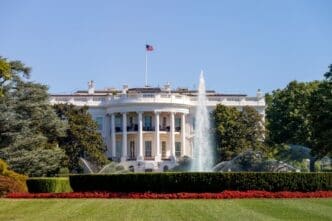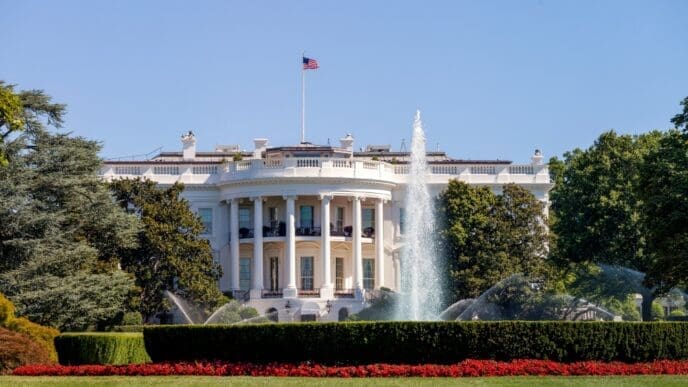WASHINGTON D.C. – The Trump administration launched an aggressive, full-scale defense of its military strikes on Iran this week, with top national security officials claiming to possess “new intelligence” that proves the attack was a resounding success. This forceful counter-narrative comes in direct response to a damaging leak of a classified assessment which concluded the bombing raid had only minimally set back Tehran’s nuclear program.
The escalating battle over the truth has created a significant credibility crisis for the White House, pitting the president and his handpicked leadership against what appears to be a dissenting view within the U.S. intelligence apparatus. The administration’s campaign to control the story culminated in a series of coordinated statements from its most senior officials and a planned, high-stakes briefing for senators, all while President Donald Trump himself reversed his earlier, more cautious tone on the outcome of the attack.
The public relations offensive was led by the Director of National Intelligence, Tulsi Gabbard, a Trump appointee who took to social media to directly refute the leaked report. “New intelligence confirms the president’s statements,” Gabbard declared, making the extraordinary claim that it would “likely take years” for Iran to rebuild its nuclear capabilities—a stark contrast to the leaked report’s assessment of a delay of only a few months.
This sentiment was echoed by CIA Director John Ratcliffe, who insisted the new information came from a “historically reliable” source. Both Ratcliffe and Gabbard, along with Secretary of State Marco Rubio and Defense Secretary Pete Hegseth, are scheduled to brief senators shortly, where they will face intense questioning from lawmakers on both sides of the aisle who are demanding clarity on the conflicting reports. The briefing is shaping up to be a critical test of the administration’s ability to substantiate its claims with concrete evidence.
The administration’s unified front appeared designed to erase any doubt, particularly the doubt expressed by President Trump himself just days prior. Initially, Trump had appeared to concede the ambiguity of the situation, calling the initial battle damage assessments “inconclusive.” However, within hours of that admission, his tone shifted dramatically. In a remarkable reversal, the president began depicting the attack in triumphalist terms. “This was a devastating attack and it knocked them for a loop,” he asserted, adopting the definitive language now being pushed by his national security team.
This sudden pivot underscores the political pressure the White House is facing to portray the high-risk military operation as an unqualified victory. The catalyst for this aggressive media strategy was the unauthorized disclosure of a classified intelligence assessment that painted a far less successful picture. The leaked document, which quickly circulated among journalists and foreign policy analysts, concluded that while some Iranian facilities were damaged, the core elements of the country’s nuclear program remained intact and that development had likely been delayed by only a few months.
The leak effectively challenged the core justification for the strike and created a political firestorm, suggesting the administration had either exaggerated the threat or was now exaggerating the outcome. Such leaks are often a sign of deep internal dissent within the government, typically originating from career officials in the military or intelligence agencies who believe the official narrative being presented to the public is misleading or dangerously inaccurate.
In response, the White House has not only disputed the contents of the leaked report but has also reportedly taken steps to punish its disclosure. According to sources on Capitol Hill, the administration is attempting to restrict the sharing of sensitive classified documents with Congress, a move that would severely hamper legislative oversight of military and intelligence operations. Furthermore, the administration is publicly claiming that the media is weaponizing the leaked information in a politically motivated effort to damage President Trump.
This strategy of attacking the credibility of both the press and dissenting intelligence assessments, while simultaneously limiting congressional access to information, is a familiar tactic for the administration. However, the vagueness of the “new intelligence” being cited is likely to fuel further skepticism. By attributing the information only to a “historically reliable” source without providing any corroborating details, the administration is asking lawmakers and the American public to take its claims on faith—a difficult proposition in a deeply polarized environment.
As the administration’s top officials prepare to face senators, they will be under immense pressure to do more than simply repeat their public assertions. Lawmakers will almost certainly demand access to the raw intelligence behind the new claims to determine whether it truly supersedes the initial, more pessimistic assessment. The outcome of this confrontation will have consequences that extend far beyond the immediate political fallout. The conflicting narratives have sown confusion and distrust, not only domestically but also among key U.S. allies who rely on American intelligence to make critical security decisions. At stake is not only the public’s understanding of a single military operation, but the broader credibility of the U.S. government’s national security pronouncements on the world stage.












